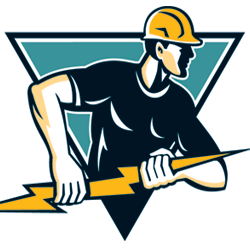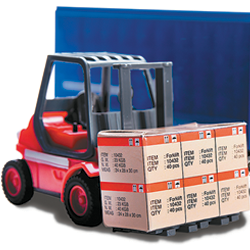|
exhibiting 101

Do Good Fences Make Good Neighbors?
Open the doors of communication to transform neighboring exhibitors from adversaries into allies.
According to John Donne, no man is an island. But the same is true for exhibit managers. Even if you're not sharing a sidewall with a neighboring "booth buddy," you're always going to have another exhibitor setting up shop just across the aisle – and it's not at all unusual for that company to be one of your organization's arch business rivals.
I'll admit that early in my career, I was so preoccupied with making things happen within my own booth space that I didn't pay much attention to who was next door or across the aisle. Once I got my industry bearings, I realized that being neighborly went a long way, and developing allies instead of adversaries helped head off unnecessary altercations. So here's some neighborly advice to help you avoid butting heads and instead develop mutually beneficial relationships with the booth buddies you encounter inside the exhibit hall. Contact Show Management Exhibits are often designed in a bubble with no regard for what adjacent displays will look like. But whether you like it or not, your neighbor's plans could have a direct effect on your plans, and vice versa. And if you don't realize that until you're already on site, you both might end up redesigning your exhibits on the fly. To avoid this, I contact show management and get answers to the following questions: What are the space-usage rules? Are there varying height restrictions? Will each exhibitor get full cubic usage of its rented booth space? Are there any rules that govern space usage, especially around the common border between two peninsula exhibits? If our spaces are back-to-back, am I responsible for covering exposed areas of my exhibit with masking drape, or is that show management's responsibility? After I get the answers to those questions, I ask show management for the contact information of the exhibit managers with the neighboring spaces. I make contact with them three to six months before the show to introduce myself and find out if they will be using an existing property or designing something new for the event. I also try to give them a heads up regarding my initial plans and then set a date a few weeks down the road to follow up, verify our booth layouts, and proactively address any potential problems. Case in point, here are just some of the scenarios I've faced when it comes to sharing a split-island space – and how I resolved them. ➤ Exhibits with unfinished backs. An exhibit's unfinished back side may butt up against or face your booth space, detracting from your desired aesthetic. If, after contacting the exhibit managers with spaces adjacent to mine, I learn that the backs of their booths are unfinished, I sidestep this eyesore by planning for the back of my client's exhibit to be left unfinished as well, and then butt the two structures against each other, if possible. ➤ Hanging signs. I once had a neighboring exhibitor that wanted to hang his sign at the exact height I wanted to hang mine. So we compromised: The exhibitor hung his sign a smidge higher so that his company's logo (but not the company name or tagline) was visible behind our sign. ➤ Carpet color. You don't want your carpet to be too similar to your neighbor's carpet, as the resemblance will often lead attendees to assume that the two booths are one large exhibit (or at least two exhibits for the same company). In one case, my client changed the color of his rental carpet to make the threshold obvious. ➤ Electrical boxes. Bulky electrical boxes situated between booth spaces are often the peskiest problems to resolve. For example, when you're running power for two peninsular exhibits, electricians generally want to drop a large, unsightly electrical power box – accompanied by yards of large, coiled cables and connectors – smack dab between the two booth spaces. That box can interfere with your plans or necessitate the removal or relocation of exhibit elements. Your options for solving this problem depend on the amount of power required by each exhibit (which will dictate the size of the electrical box) and whether the venue's power is provided from floor ports or ceiling drops. But if you know in advance how large the box will be and where electricians plan to place it, you can proactively make adjustments to your floor plan as needed. Know the Rules What you can and can't do with your booth space isn't solely dependent on what your neighbors are doing. Show management may state in your booth space rental agreement that the show is following International Association of Exhibitions and Events' (IAEE) Guidelines for Display Rules and Regulations, which provide recommendations for activities and elements affecting neighboring exhibitors. The guidelines include restrictions on the volume of music and microphones (85 decibels), the height of hanging signs (which varies by venue), and line-of-sight rules for linear exhibits (aka in-line booths, which are usually 10-foot-wide spaces positioned side by side and facing a common aisle). In addition to rules regarding linear exhibits, IAEE guidelines also cover end-cap booths (two side-by-side linear exhibits on the end of two back-to-back rows of linear booths). For example, the maximum height of an exhibit back wall is 8 feet, while side walls and all other materials (counters, signage, etc.) cannot exceed 4 feet in the front half of the booth, so as not to obstruct the sight lines of your neighboring exhibitors. However, these rules aren't set in stone, and show management is generally willing to look the other way if nearby exhibitors are amenable to your plans. So if your exhibit design dictates that you have to put something tall in the front half of your booth space, consult your neighbors and ask if they mind. If they don't have a problem with it, get this in writing and have a copy with you on show site. If they won't agree to your varying from the printed rules, you'll probably need to rethink your design. Be a Good Neighbor Even if your booth space isn't physically connected to another exhibitor, cross-the-aisle neighbors can pose a separate set of potential problems. Here's a sampling of some common elements to keep in check. ➤ Lighting. Exhibit lighting is one of the areas that falls under most show regulations regarding "confines of your booth space." Basically, any illumination cast by your exhibit must remain inside the space you've rented and not encroach on the public aisles or neighboring exhibitors' booths. ➤ Presentations. Instead of trying to talk over presentations being given nearby, work with neighboring exhibitors to vary your presentation start times. For example, if you know your neighbor's presentation schedule is on the hour, set yours for the half hour. And there's nothing wrong with promoting each other's presentations. Also note the frequency of your microphones, as mics set to the same frequency as your neighbor's could cause sound interference. ➤ Promotions. Don't overlook the possibility of cross promotion to help drive traffic between your exhibit and your neighbors'. For example, I have a client who is known for having a coffee cart in his exhibit at a particular show every year. Prior to that year's show opening, one of the neighboring exhibitors contacted me and asked if it would be OK to distribute individually wrapped biscotti to attendees as a giveaway, playing off our coffee giveaway right across the aisle. When people came to the neighboring exhibit first, they were told not to miss the coffee in the nearby booth to go with their biscotti. It was a win-win partnership. ➤ Installation and Dismantle. Since there's a limited amount of room for freight in the aisles during setup and teardown, don't hog the space around your exhibit. And don't let the material handlers drop off your freight within your neighbors' booth spaces, as it will have to be moved (probably at a cost to you) if it interferes with their setup. A little consideration can go a long way. Beyond those rather logistical considerations, it also pays to be friendly and lend a helping hand when needed. I've made lots of friends on the show floor by offering to loan a neighbor my luggage cart, a box cutter, or a power strip. You never know when you'll need something, and what goes around usually comes around on the show floor. Regardless of the situations that arise with your neighbors, remember the Golden Rule: "Treat others the way you want to be treated," and the show floor will be a much more collaborative and far less confrontational place for us all. E  Candy Adams
Candy AdamsCTSM, CEM, CMP, CMM "The Booth Mom," is an independent exhibit project manager, trainer, speaker, consultant, and an Exhibitor Conference faculty member. CandyAdams@BoothMom.com
|
|
|
||||||||||||||||||||||||||||
|
|
||||||||||||||||||||||||||||
|
TOPICS Measurement & Budgeting Planning & Execution Marketing & Promotion Events & Venues Personal & Career Exhibits & Experiences International Exhibiting Resources for Rookies Research & Resources |
MAGAZINE Subscribe Today! Renew Subscription Update Address Digital Downloads Newsletters Advertise |
FIND-IT Exhibit & Display Producers Products & Services Supplier to Supplier All Companies Compare Get Listed |
EXHIBITORLIVE Sessions Certification Exhibit Hall Exhibit at the Show Registration |
ETRAK Sessions Certification F.A.Q. Registration |
EDUCATION WEEK Overview Sessions Hotel Registration |
CERTIFICATION The Program Steps to Certification Faculty and Staff Enroll in CTSM Submit Quiz Answers My CTSM |
AWARDS Sizzle Awards Exhibit Design Awards Portable/Modular Awards Corporate Event Awards Centers of Excellence |
NEWS Associations/Press Awards Company News International New Products People Shows & Events Venues & Destinations EXHIBITOR News |
||||||||||||||||||||
|
||||||||||||||||||||||||||||






